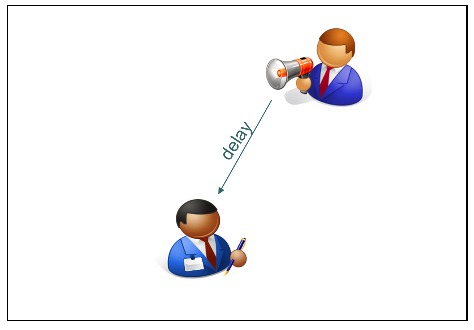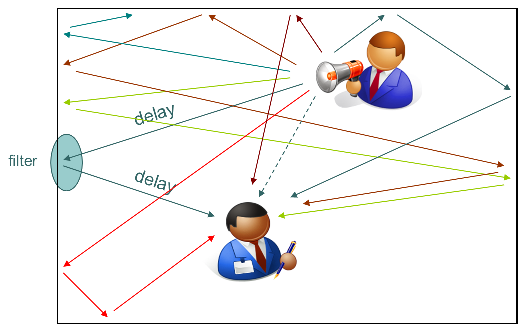Reflections
Typically, a sound emanates from one position in the room, and the most prominent sound is heard directly from the source.

In addition, the sound is reflected by the walls of the room. The wall does not reflect all of the sound, so it acts like a filter. The surface and structure of the wall determines what frequencies are reflected, and the direction the sound takes after bouncing off the wall. In a simple case it might look like this:

We could model this with a delay line and a filter, like this:

Now, if we want a realistic model of the room, we want to include the reflection of the source for all four walls, and also the secondary reflections (reflections of the reflected sound). A fully fledged model, creating reflections from all walls, ceiling and floor, including many layers of secondary reflections would indeed make a good simulation of a virtual acoustic space. However, such an algorithm can become quite complex and it is also CPU intensive, so we want to look into some alternative strategies.

Typically, we split the reverb design into an early and a late part. We call the first part “early reflections”, and it is typically modeled with delay lines and filters as indicated above. For best results, each reflection must be spatialized accordingly, so that the sound of the reflection will appear to emanate from the right direction in relation to the listener. The early reflections is the part of the reverb that is most important for perception of the characteristics (size, architecture, materials) of the virtual space we want to put our sound into. The second part of the reverb is called “late reverberations” and can be simulated with a more generic and diffuse reflection pattern. Typically we want the late reverberation to have a flat frequency response (no prominent resonant frequencies) and often also an exponential decay

Even though the early reflections are most important for the perception of natural room characteristics, we will take some time in this lesson to look at different designs for creating the late reverberations.